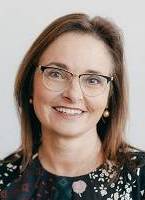You have /5 articles left.
Sign up for a free account or log in.

Istockphoto.com/Sorbetto
Mildred Topp Othmer is not a household name, but the late benefactor enjoyed some renown in philanthropic circles. When she died in 1998, she left the University of Nebraska at Lincoln, her alma mater, $125 million in her will.
The bequest made headlines back then because it was the largest ever single, private donation given to the university. But left unsaid was that Othmer had created her own wealth, independent of her husband.
And just last week the death of an unassuming legal secretary in Brooklyn who left $8.2 million to college scholarship funds made the front page of The New York Times. The woman, Sylvia Bloom, bequeathed a portion of the funds to her alma mater, Hunter College of the City University of New York.
Institutional fund-raisers have taken note.
Last month, Dartmouth College announced a fund-raising campaign targeted at women donors. It has a goal of raising $1 million apiece from 100 alumnae. The launch of the gender-specific campaign, which is part of the college’s overall $3 billion fund-raising campaign, reflects the growing “influence of women’s philanthropy,” according to the college. It’s also an example of the increased recognition of a new and still largely untapped pool of money for institutions seeking to expand their donor base.
While Dartmouth’s new effort is unique in terms of scale and ambition, the college is hardly alone in creating women-centered, so-called giving societies or giving circles.
For instance, members of the Women of Chapman have pledged $2.5 million in support of three major capital campaigns at Chapman University. The group has given $6.25 million to the California institution during the last four decades.
Members of Arizona State University’s Women and Philanthropy investor program make annual contributions to a pooled fund and vote on how to distribute it among university initiatives. The university’s current fund-raising effort, Campaign ASU 2020, has a goal of $1.5 billion.
And the Women’s Philanthropy Circle raises funds for women students attending colleges within the Maricopa County Community College District, also in Arizona. The group has a dual purpose, to reduce barriers to higher education for women students and to cultivate women philanthropists.
A number of factors are driving this growing focus on women’s philanthropy, said Sue Cunningham, president and CEO of the Council for Advancement and Support of Education.
“It speaks to emerging trends,” she said. “The wage gap between women and men is closing. Women on average live four years longer than men and are inheriting money from their parents and their husbands, so their capacity to give can be significant.”
“In terms of the number of donors, we’re seeing more women giving, and they’re giving more broadly.”
What’s more, the donations are also giving women donors more influence on college campuses, through appointments on university governing boards and advisory panels, more access to top administrators, and more say in how the institutions are managed and how their long-term strategic plans are prioritized.
Duke University’s Women’s Impact Network, or WIN, a relatively new organization that offers membership to donors who have given $100,000 or more, is focused on those very issues.
“Part of it is elevating the conversation about women with money, whether earned, inherited or co-managed with spouses,” said Bridget Booher, the director of WIN. “Whether we think of ourselves as guardians of money or owners of money, how do we talk about it? We have women already doing that, talking with other women and having them thinking about it.”
Unlike the groups at other colleges focused on getting women donors to give to a particular appeal, scholarship program or capital improvement project, Booher said Duke’s program, launched just three years ago during the university’s last fund-raising campaign, wants “women to give where their passions are.”
“We're trying to broaden, accelerate and elevate what it means to have meaningful impact,” she said. “We want them to think strategically and ambitiously about how they want to have impact with their philanthropy.
“We started to look at women’s giving patterns over time and their volunteer activities on Duke boards,” she said. They found that women were underrepresented. Memberships on boards are often tied to philanthropic leadership,” Booher said. “We wanted to get them into the pipeline for board service, to get them into the leadership pipeline and have them really step into philanthropy and go big.”
Women are interested in giving that is "relational" and "motivational," such as giving for financial aid, Booher said. While there are women and men who have all kinds of philanthropic approaches, she said that men typically are more likely to care about "high visibility," such as having their name on a building.
Another reason for the growth in female philanthropy is that colleges are graduating more women, not only over all but in fields that were long dominated by men. For the first time ever, more women than men graduated from Dartmouth with engineering degrees in 2016. College administrators said it was first institution in the country to do that. A large portion of the graduates being tapped for donations are in their peak earning years or are nearing retirement and have more discretionary income.
At Dartmouth some 53 alumnae have already agreed to donate $1 million each to the campaign targeting 100 women.
“The best evidence of how people are responding to this is that we’re already at the halfway mark,” said Caroline Hribar, one of the architects of the campaign and of another effort to raise $25 million among alumnae and widows of Dartmouth graduates to help renovate Dartmouth Hall, an iconic academic building on the New Hampshire campus. “Over all the response has been terrific.”
Beth Cogan Fascitelli, an alumna and trustee of the college who is spearheading the fund-raising initiatives, said the effort sends an important message at the college, which started admitting women only 46 years ago.
“We want the next generation of students, male and female, to know that women and men are equally committed to the power of a Dartmouth education,” she said in an announcement released by the college. “This initiative is inviting women to come forward, work together and have impact through philanthropy.”
Hribar said the effort is more focused on moving forward than looking back.
”We’re talking about building Dartmouth’s future, and the entire Dartmouth community needs to be involved,” she said. “Women are one piece of the story.”
There is also an effort at Dartmouth to increase the membership of “the Centennial Circle,” a donor group representing five decades of women graduates, to 250 members by 2019, when the college marks its 250th anniversary. The larger objective is to raise enough money annually to provide scholarships for 250 students. (The group has 188 members and is for alumnae who make gifts of at least $100,000 to the Dartmouth College Fund. It was created four years ago and has raised $30 million so far.)
Hribar, a founder of the Centennial Circle and a 2000 graduate of the college, said the enthusiasm for the campaign to enlist 100 women donors “was better, was louder and came together faster than I had even hoped.”
“I knew we could do this from the very beginning but to see the enthusiasm has been really exciting,” she said. “It was the circle that allowed us to set our sights so high. It proved that the women of Dartmouth could come together to achieve extraordinary goals.”
Cunningham, the CASE president, noted that women control $14 trillion of the personal wealth in the United States (or 51 percent of the total) and that number is expected to rise to $22 trillion by 2020. Women also account for 45 percent of the millionaires in the U.S.
Billionaire Rhonda Stryker is among top women donors. She and her husband gave $100 million to Western Michigan University in 2011 to create a school of medicine. In 2016 the couple pledged $20 million to Harvard Medical School’s Department of Global Health.
While large gifts are obviously welcomed, Cogan Fascitelli said college fund-raisers are careful that such donations don’t alienate or intimidate potential donors who might want to give smaller amounts but worry their gift could be seen as inconsequential.
“Not everyone can give a million dollars. They can give $10 or $100; every dollar does matter,” she said. “The point is to get women in general interested in becoming givers.”
Cogan Fascitelli, a partner at Goldman Sachs and chief operating officer of Merchant Bank Worldwide, said her first donation to Dartmouth after she graduated was $100.
“Thirty-five years later, I gave substantially more,” she said. She declined to say how much.
Her early experiences as a new donor are why many of institutions have lower giving thresholds for young alumni -- to get them into a pattern of giving so they might become bigger philanthropists later in life.
“As you get involved in giving every year, eventually you give more,” she said.
That’s why colleges should start paying more attention to their women graduates, she said, noting that 31 percent of Dartmouth graduates and 50 percent of the current student body are women. (Women make up 38 percent of the Board of Trustees.)
What’s more, 35 percent of alumnae donate to the college, which is not significantly less than the 37 percent of male graduates who do so. (The average annual gift from women is $1,217, the average from men is $1,852.)
Hribar said the campaign is already starting to resonate with some women students at Dartmouth. She hopes they’ll view the effort as donors looking out for them and think, “There’s this whole network that’s there for us now and will be there waiting for us when we graduate from Dartmouth.”
The irony that the once all-male Dartmouth was the last Ivy League institution to admit women, in 1972, is not lost on the women involved in the campaign -- or, for that matter, the men.
“There’s a certain level of pride among male alumni that the women are doing this,” said Bob Lasher, Dartmouth’s senior vice president for advancement. “New leaders are being seen, new forums are emerging, advisory groups and boards have larger representations of women. There wouldn’t have been so many good women leaders if they hadn’t emerged from the Centennial Circle.
“We’re breaking the sound barrier by doing something unprecedented at Dartmouth,” he said. “What I love about it is that it’s very deliberative, aspirational and bold.”
Hribar said for too long philanthropy and the influence that comes with it were spaces traditionally occupied by “men talking to other men.”
“Women now have power and resources, and people are figuring out that they have to talk to them,” she said.
The Women’s Philanthropy Council at the University of Wisconsin may deserve much of the credit. The self-proclaimed pioneer in “the national women’s philanthropy movement” was founded in 1988.
According to its website, “The program was the first major gifts and leadership initiative for women at a coeducational institution. It has since become a national model.”
Council members contribute a minimum of $50,000 each and collectively have given more than $85 million to the University of Wisconsin Madison, the website says. The organization also says it has influenced more than $500 million in gifts by women to the University of Wisconsin Foundation since 1988.








